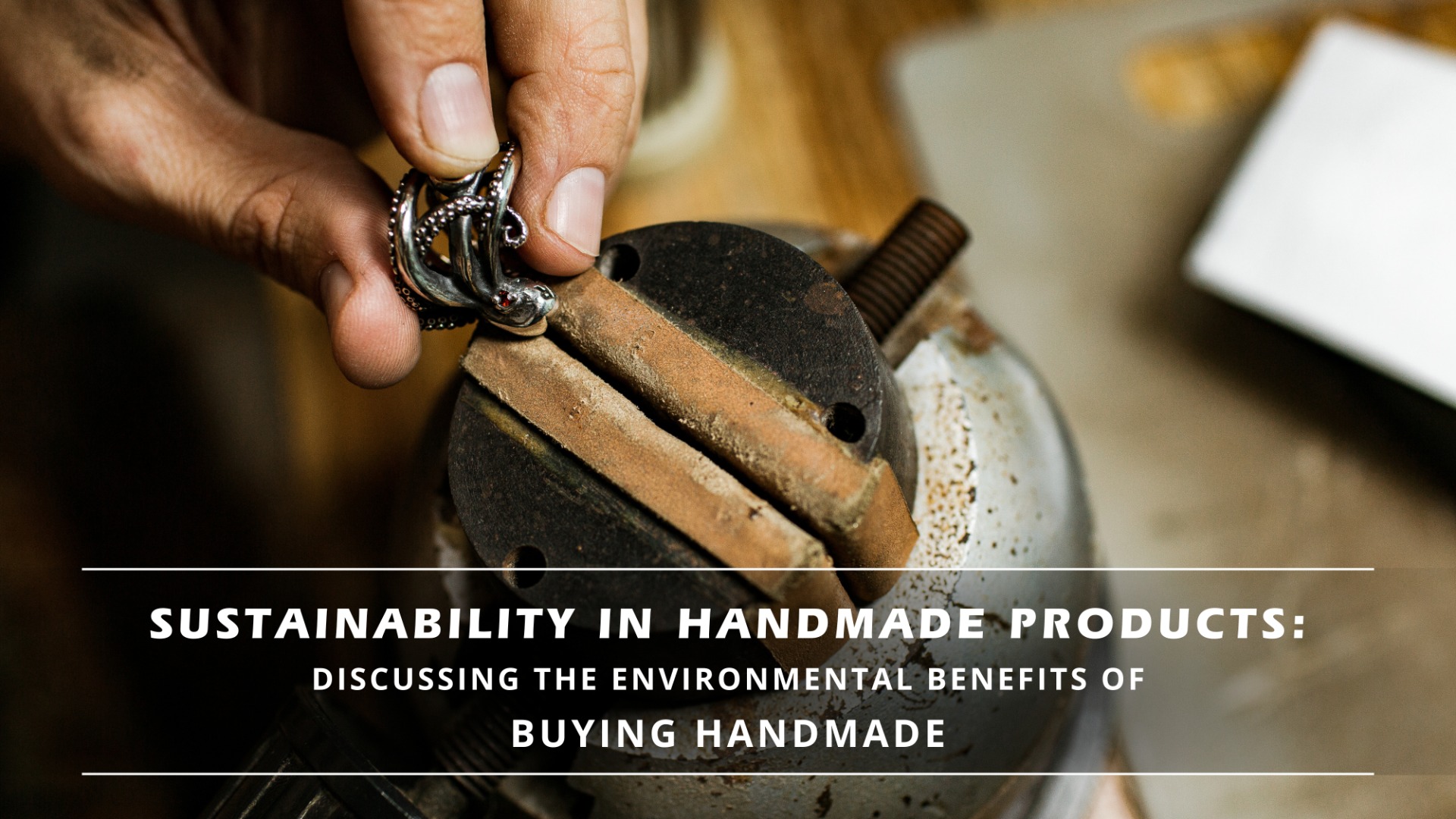Sustainability In Handmade Products

Sustainability In Handmade Products: Discussing The Environmental Benefits Of Buying Handmade.
Have you ever wondered what is common between Sachin Tendulkar, Serena Williams, and Lionel Messi? They are not just iconic sports people, but are considered the GOATs in their respective fields - cricket, tennis and football. Now, what is common between Sachin Tendulkar’s bat, Serena Williams’ racquet and Lionel Messi’s shoes? Despite the sophistication and advancement of technology, all these are handmade products to varying degrees that have been customised for use by these greats!
Handmade products permit a level of uniqueness that cannot be replicated by factory or machine made products. When you buy a handmade item, it is not just another item that you possess, it is essentially an expression of your unique sensibilities and style.
These days, handmade products are gaining popularity, as an ever increasing number of consumers are seeking unique, high-quality items that are made with individual care and attention to detail. Handmade products also have a significant environmental benefit over mass-produced, factory-made goods due to their small batches of production, the use of many locally available, organic materials, and very importantly, the use of manual labour in creating them, as opposed to burning fossil fuels to run machines that build industrial or assembly line products.
When we buy handmade, we are supporting a more sustainable and eco-friendlier way of life. In this blog, we will be discussing the environmental benefits of buying handmade products and why it is important to support sustainable practices in the production of handmade goods.
Handmade Vs Mass Made Products - How do they Impact the Environment?
Handmade products are made using traditional techniques and often use natural materials, such as metals, wood, stones, cloth, clay and natural pigments. These materials are biodegradable and very durable, and thus environment friendly, unlike the synthetic materials and chemicals used for mass produced goods. When a wooden bowl is made by hand, the woodworker will use only the necessary amount of wood to create the product, minimizing waste. Handcrafted products also use human labour as the predominant source of power. Mass-produced products, on the other hand, often use synthetic materials and burn fossil fuels that cause significant environmental damage. Mass-produced products are often produced in large quantities in assembly lines, which require large amounts of energy and resources to produce. This energy consumption results in greenhouse gas emissions, which lead to global warming and hence climate change. In contrast, handmade products are made in smaller quantities and use human labour to power the production, hence have minimal carbon footprint. Handmade products are also often made by skilled artisans who use traditional techniques to create their products. These techniques are often passed down from generation to generation and have been developed over centuries to be environmentally sustainable, and have attained a level of perfection and beauty that only a handcrafted product can lay claim to possess.
Why Are People Choosing Handmade Products Over Mass Production? Is Slow & Steady winning the race?
In a world where mass production and fast-paced consumerism reign supreme, it's easy to forget the value and beauty of handmade products simply because they are not backed by big marketing bucks and giant corporations. From apparel to shoes to home decor to gifts to accessories, to musical instruments, handmade products are not only made with care and attention to detail, but they also have a backstory and cultural and historical significance behind them, apart from the individual stories of the human hands that create them.
They offer a level of quality and uniqueness that cannot be replicated even in part by mass-produced items. Handcrafted products are like the shrubs and trees of Mother Nature - no two are exactly the same! And that is why people cherish ‘handcrafted’ products, as each one is unique and one-of-a-kind. It is due to this reason that good quality handcrafted products command a premium, not just for their craftsmanship, but also due to the limited quantities in which they can be made within a certain time.
The Use of Traditional Techniques:
Handcrafted products use traditional techniques which are specific to a culture or geography. This not only makes them unique, but also capital-efficient, because it does not require the significant investment in expensive machinery and infrastructure.
Low usage of machinery is highly energy-efficient and also reduces the carbon footprint. Moreover, the craftsmanship, luxury quotient, attention to detail and the fact that every piece is unique makes handcrafted products extraordinary. So, when you buy handmade items online you buy unique products that are environmentally responsible.
Sustainable Raw Materials:
Handmade products are often made using natural, sustainable materials such as wool, cotton, and bamboo to name a few. There are no toxic additives or synthetic materials used in the name of product durability and budget-friendliness.
Supporting Local Communities:
Buying sustainablehandmade products supports the local economy, providing employment and income generation in the local communities. Since many of these communities are in semi-urban or rural areas, this leads to a more equitable distribution of income within the economy as a whole, and rural demand generation. This has a positive snowball effect on the economy, leading to overall prosperity and growth.
Supporting Sustainable Practices for Making Handmade Products:
Sustainable handmade products often have a story and a cultural significance in their origin stories. This makes each and every product unique, and preserves cultural heritage and diversity. When we buy handcrafted items onlinefrom authentic sources, we make a conscious choice to support artisans and their craft, to preserve traditional techniques, and foster self-sustaining and financially independent communities.
Handcrafted products are not just exquisite and beautiful, they have a very human story to tell, and by purchasing them, we become a part of that story. That’s how interconnected humanity is as a species, and that’s what makes the world truly a global village.


 USD
USD  GBP
GBP EUR
EUR AED
AED


